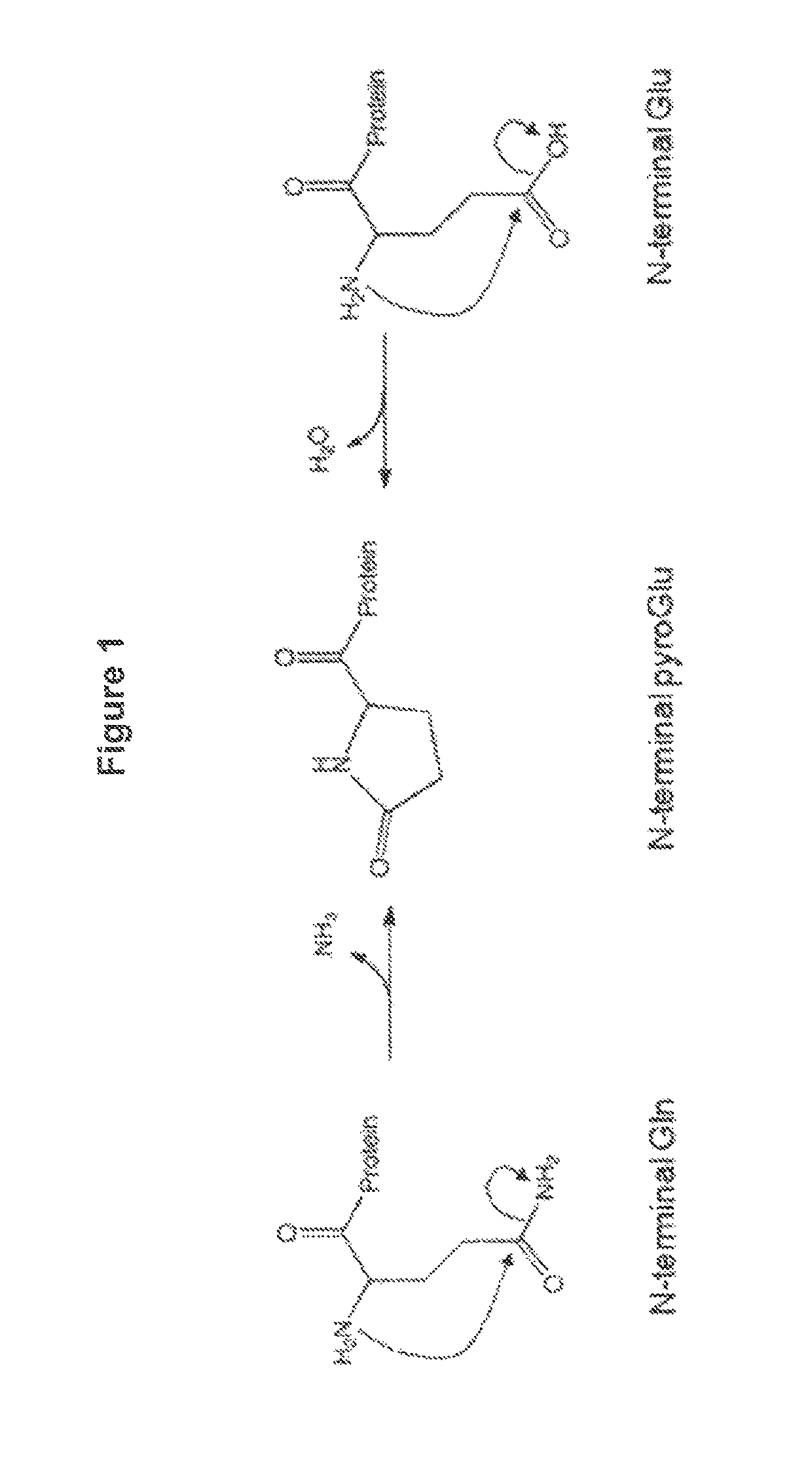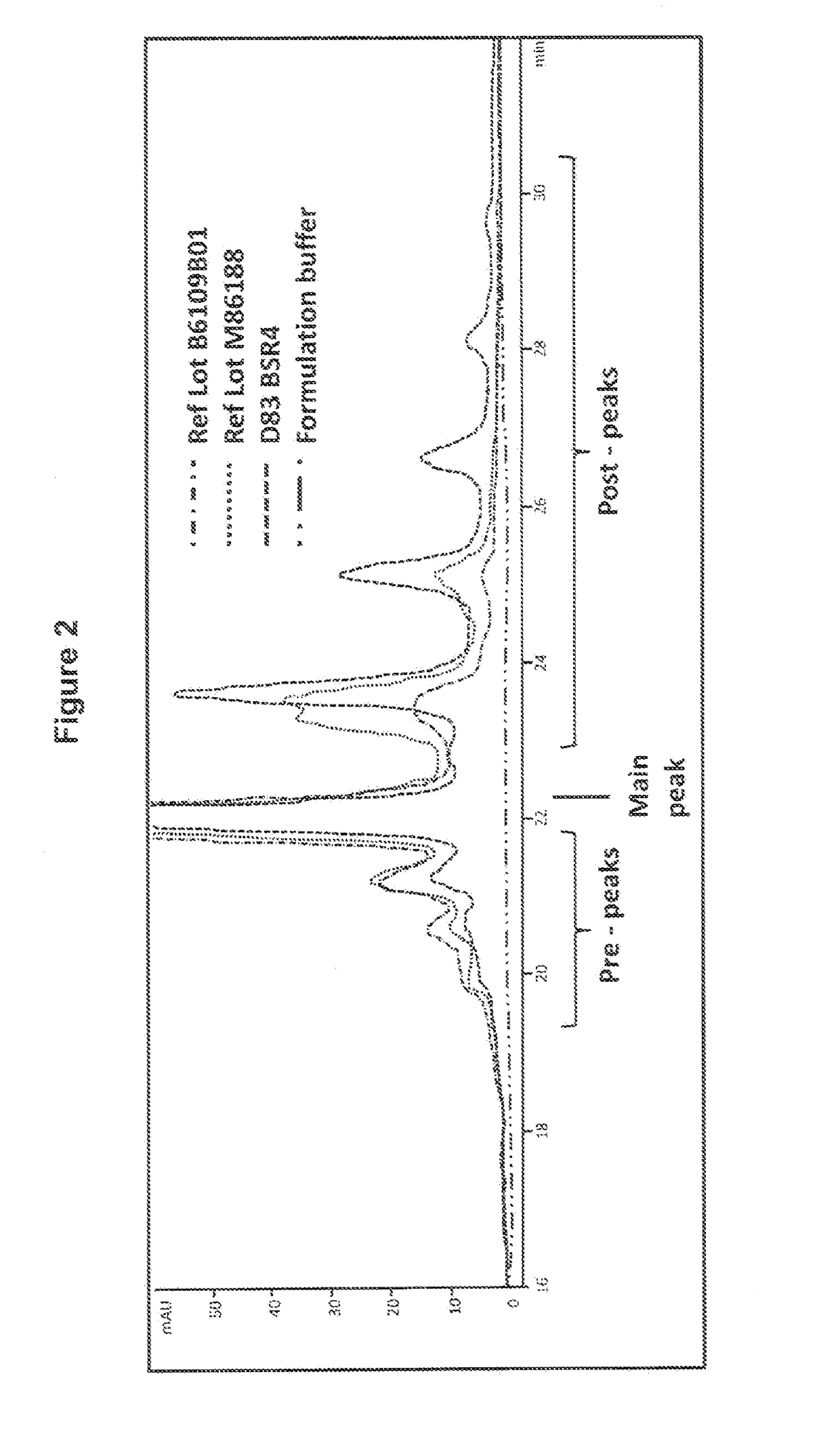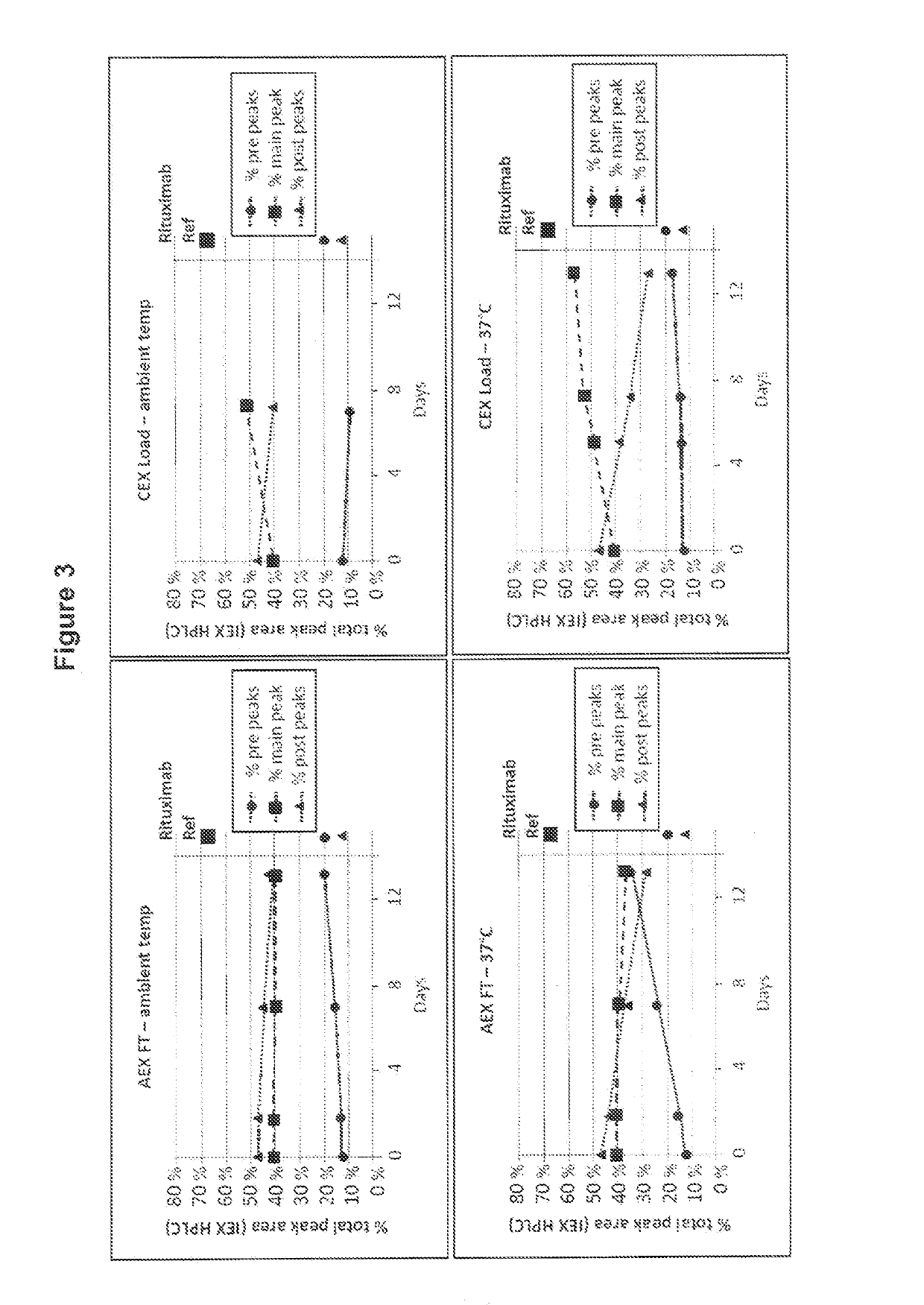Method for increasing pyro-glutamic acid formation of a protein
a pyroglutamic acid and protein technology, applied in the field of increasing pyroglutamic acid formation of a protein, can solve the problems of heterogeneity in the product, the potential to decrease biological activity of modifications, and the inability to achieve heterogeneity in therapeutic antibodies
- Summary
- Abstract
- Description
- Claims
- Application Information
AI Technical Summary
Benefits of technology
Problems solved by technology
Method used
Image
Examples
example 1
[0101]A CHO producer cell line expressing the Rituximab monoclonal antibody (also known under the trade name Rituxan) was selected and used to produce the Rituximab antibody in a 10 L single use bioreactor with a stirred tank design using a straight fed-batch fermentation process.
[0102]Rituximab is a chimeric antibody, with mouse variable domain and human IgG1 heavy chain and Kappa light chain constant regions. Both the heavy and light chains of Rituximab have a glutamine at their N-termini (after removing the secretory signal peptide), and the heavy chains have a lysine at their C-termini. N-terminal glutamines can cyclize to pyro-glutamic acid both by cellular enzymes and chemical conversion, and C-terminal lysine clipping by cellular carboxypeptidases is very common. Both of these modifications reduce the number of positive charges on the protein, and heterogeneity of these N- and C-terminal modifications contribute to a complex cation exchange high performance liquid chromatogra...
example 2
[0110]The first conditions to test were simply to determine whether either the anion exchange Flow-through solution (AEX FT) or the subsequent cation exchange loading solution (CEX-Load) would promote glutamine cyclization at ambient temperature or at 37° C.
[0111]Samples were taken from the end of the anion exchange flow-through step (pH 8) and after preparation for the cation exchange load had been performed (pH 5.5) and aliquoted into replicate tubes for time-points and held at either ambient temperature or at 37° C. Periodically over 13 days, one tube from each condition was transferred to a −70° C. freezer, and at the end of the time course, all samples were thawed and analyzed by IEX-HPLC (FIG. 3). (Fewer aliquots of the CEX load were made for ambient temperature hold).
[0112]As shown in FIG. 3, no conversion of the Rituximab post-peaks isoforms into the main-peak isoform was observed when incubating the Rituximab AEX FT solution at ambient temperature or at 37° C. In contrast, ...
example 3
[0113]Higher conversion rates than the ones observed herein have been reported by Dick et al. (2007, Biotechnol, Bioeng. v97 p 544) in the presence of 35 mM phosphate buffer at pH 6.2. Thus, new experiments were performed to investigate the kinetics of the conversion at ambient temperature, 37° C. and 45° C. and also the effect on the conversion rate that the protein concentration might have.
[0114]The Rituximab AEX FT solution was spiked with sodium phosphate to 35 mM from a concentrated stock solution and titrated to pH 6.25 with acetic acid, as the most operationally simple approach to implement in a manufacturing process.
[0115]The Rituximab AEX FT sodium phosphate solution was divided into 3 aliquots where one was left unchanged at a concentration of 1.85 mg / mL protein while the two others were concentrated 2× (middle panels) and 5× (right panels) to approximately 3.7 and 9.25 mg / mL using a Millipore 30 kDa MWCO spin concentrator. Each sample was filter sterilized with a 0.2 μm s...
PUM
| Property | Measurement | Unit |
|---|---|---|
| temperature | aaaaa | aaaaa |
| temperature | aaaaa | aaaaa |
| temperature | aaaaa | aaaaa |
Abstract
Description
Claims
Application Information
 Login to View More
Login to View More - R&D
- Intellectual Property
- Life Sciences
- Materials
- Tech Scout
- Unparalleled Data Quality
- Higher Quality Content
- 60% Fewer Hallucinations
Browse by: Latest US Patents, China's latest patents, Technical Efficacy Thesaurus, Application Domain, Technology Topic, Popular Technical Reports.
© 2025 PatSnap. All rights reserved.Legal|Privacy policy|Modern Slavery Act Transparency Statement|Sitemap|About US| Contact US: help@patsnap.com



